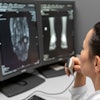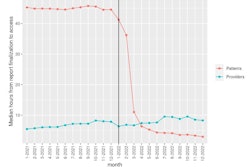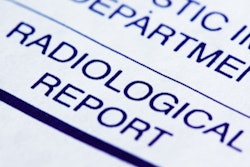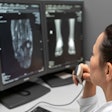Patients prefer structure and thorough details on radiology reports, according to research published October 21 in Current Problems in Diagnostic Radiology.
A team led by Parth Parikh from the Mayo Clinic in Scottsdale, AZ, found that for reading CT and MRI reports, more highly rated reports were structured and had a lower Flesch Reading Ease score than poorly rated reports.
“Our study suggests that despite low reading ease, patients preferred more difficult-to-read content in the finding section,” the Parikh team wrote.
As part of the 21st Century Cures Act, patients can access, exchange, and use their electronic health information, including radiology reports. Part of improving patient access to relevant health information is understanding health literacy. However, the researchers pointed out that there is limited understanding of patient satisfaction and association with structured and more detailed reporting.
Parikh and co-authors explored differences in quantitative features between poorly versus highly rated patient ratings of radiology reports.
They included survey data regarding 135 reports evaluating CR or MRI findings. The researchers performed quantitative analyses between poorly rated (≤3 stars) and highly rated (>3 stars) imaging reports on a five-star scale.
They found that, of the total, 106 patients (78%) gave high ratings of four or five. In addition, 46 (34%) of the radiology reports were in a structured format. The researchers also reported that more highly rated reports were structured than poorly rated reports (93.5% vs. 6.5%, p = 0.002).
The team also used the Flesch Reading Ease test to measure ease of reading for the findings section. This test rates text on a 100-point scale. The higher the score, the easier it is to understand content subjected to the test. Scores between 60 and 70 are equivalent to an eighth-grade level. The researchers found that highly rated reports had a lower Flesch Reading Ease score than poorly rated reports (19.6 vs. 28.9, p < 0.01).
The team also found no significant differences between the number of words (p = 0.27), words per sentence (p = 0.94), and Flesh-Kincaid Grade level (p = 0.09) in the findings section. In the impression section, the researchers also reported no significant differences between highly and poorly rated reports.
The study authors wrote that the relationship between patient ease of reading in imaging reports and patient ratings is “complex.” They suggested that having more details in reporting would encourage patients to seek more information about diseases or findings, as well as social support. The team previously reported that patients reported thoroughness of reports as the most common feedback related to their report.
“Another explanation for why patients preferred such complex material could be purely subjective -- patients prefer their radiologists and physicians to use proper terminology while communicating with each other and enjoy being a part of this dialogue,” the authors wrote.
The team also suggested that patient-facing artificial intelligence (AI) tools could also help improve patient access and understanding without interrupting radiologist workflows. They wrote that such tools could provide patient-friendly reports automatically while still including validated and well-thought-out educational materials created by radiologists.
The study can be found in its entirety here.



















